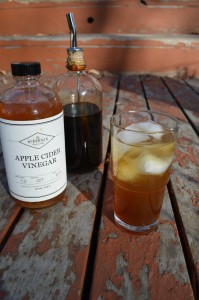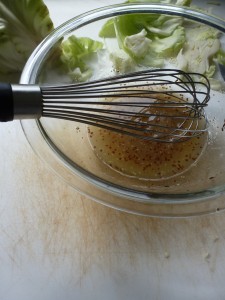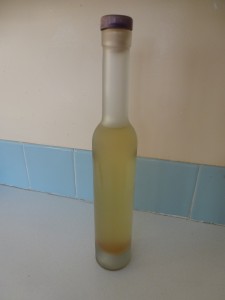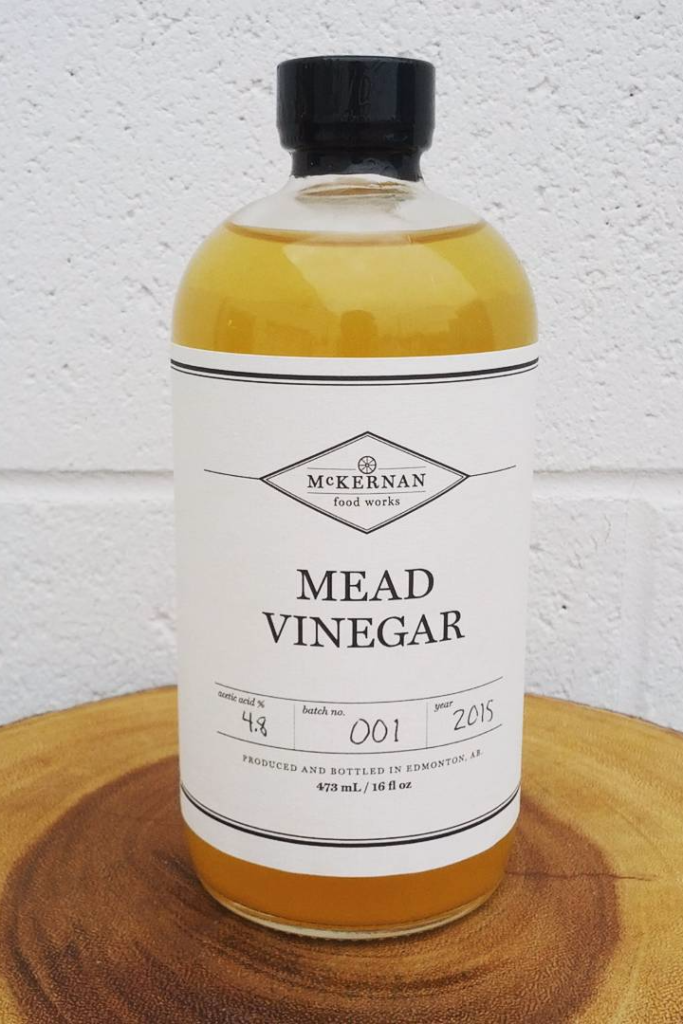My food heroes are those who can generalize food concepts for me. I’ve mentioned Ruhlman’s book Ratio about a hundred times on this site. Some other examples. I love the flavour of preserved lemons and I’ve made them a few times, but then I saw Mojojo Pickles makes preserved lime. This completely changed how I saw my preserved lemon recipe. Instead of one recipe that can preserve one ingredient, I now see it as a generalized process for preserving citrus. Or Kevin recognizing that blanching is not just for endives, but a great agricultural technique to use on other bitter greens like our local dandelions. This type of thinking drives so much of modern food, whether it’s David Chang … Continue reading.
And in my thirst they gave me vinegar
-Psalm 69:21
 This post is part of an ongoing fight against the tyranny of the lemon.
This post is part of an ongoing fight against the tyranny of the lemon.
In the ancient world drinking vinegar was for the destitute and god-forsaken. In fact, it was the last thing Christ drank before he gave up the ghost.
So it is interesting that in North America, before we had access to cheap lemons and limes, we made several thirst-quenching drinks with vinegar. The most famous of these was probably switchel, a mixture of apple cider vinegar, molasses, and ginger, diluted with cold water. Switchel was often given to farmhands during the hot harvest season.
I know drinking vinegar sounds really weird, but with balancing sweetness and … Continue reading.
 This is balsamic vinegar of Modena.[1] We’ve all had it before: it’s brown, and sweet, and acidic. This bottle was produced by Unico. I think I bought it at Safeway.
This is balsamic vinegar of Modena.[1] We’ve all had it before: it’s brown, and sweet, and acidic. This bottle was produced by Unico. I think I bought it at Safeway.
Let’s look at the ingredients list. First is wine vinegar. Then concentrated grape must. “Must” is the winemaker’s term for unfermented grape juice. So concentrated grape must is just cooked grape juice. Next we see caramel, or cooked sugar, which gives the vinegar is characteristic colour, sweetness, and body. Finally we have sulfites, which inhibit micro-organisms and prevent unwanted fermentation. In other words, this condiment is sweetened vinegar.
Bottles labelled “Balsamic Vinegar of Modena” have a faux seal on them that says “Indicazione Geografica Protettata,” or IGP. This is … Continue reading.
Resinous herbs can easily handle lights frosts, so this time of year we still have a good deal of thyme, rosemary, and other robust herbs in the garden. Thankfully there is an entire repertoire of methods to preserve them before the snow falls. You can collect them in large bouquets and hang them in your kitchen to dry, for instance. Or make salted herbs. Or pack them into a jar and pour vinegar over them. This past week I racked a couple gallons of cider vinegar from a healthy vinegar crock, so herb vinegar seemed the best way to save our thyme.
The aromatic components of herbs are called essential oils. They more closely resemble fats, ethanol, and … Continue reading.
There are many compelling reasons to never buy salad dressings from the grocery store:
- You almost certainly already have the ingredients in your pantry to make a good dressing.
- A good dressing can be made in less than 90 seconds. Actually you can make enough dressing for a few weeks in 90 seconds.
- There are weird things in store-bought dressings, like calcium disodium EDTA and acetylated monoglycerides. They also usually contain a good deal of sugar or glucose-fructose; not necessarily a bad thing, but a fact of which many people are unaware.
Invest is some quality oil and vinegar, then never buy a Kraft dressing again.

The simplest dressing to make at home is vinaigrette, which is a French diminutive … Continue reading.
The best laid schemes o’ mice an’ men
Gang aft a-gley.
-Robert Burns, “To a Mouse”
 This year, for the first time, I successfully “made” vinegar. I didn’t write about it earlier because I didn’t feel like I had actually done anything, or learned anything. Hence the quotation marks. The truth is that with the numerous little crocks and tubs in which I’ve fermented cider, every so often something really weird happens that I can’t explain.
This year, for the first time, I successfully “made” vinegar. I didn’t write about it earlier because I didn’t feel like I had actually done anything, or learned anything. Hence the quotation marks. The truth is that with the numerous little crocks and tubs in which I’ve fermented cider, every so often something really weird happens that I can’t explain.
I tried really hard to make vinegar last year. I read quite a bit online about the process. The conversion of alcoholic beverages like wine and cider into vinegar is a fermentation in the broad biochemical sense. When we make cider, yeast, a … Continue reading.
The personal website of Edmonton chef Allan Suddaby




